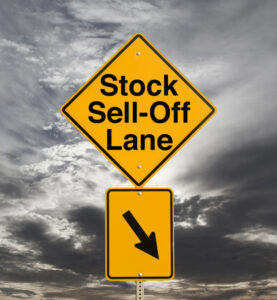Dow Plunges 1,000 Points after Fed Chair Powell Warns Inflation Requires ‘Restrictive’ Policy for ‘Some Time’
The comments below are an edited and abridged synopsis of an article by Forbes
Stocks had their worst day in months last Friday after Fed Chair Jay Powell doubled down on the central bank’s commitment to ease inflation with ongoing interest rate hikes, in line with investor expectations but doing little to quell fears that additional hikes could tip the US economy into a recession.
Powell said restoring price stability will take some time and requires the Fed to use its tools forcefully in order to bring high demand into a better balance with struggling supply.
Stocks started plunging immediately after Powell’s comments, with the Dow ending the day down 1,008 points, or 3%, to 32,283; the S&P 500 down 3.4% to 4,057, and the Nasdaq down 3.9% to 12,141.
The Fed’s most closely watched inflation indicator, the personal consumption expenditures price index, shows both the pace of consumer spending increases and inflation increases are slowing down by a much wider margin than expected.
Atlanta Fed President Raphael Bostic said that the economy has responded to Fed policy although there is still a long way to go on rate hikes, and that ongoing policy changes will have a restrictive effect on the economy.
The Fed’s interest rate hikes and withdrawal of pandemic stimulus measures have fueled concerns of recession and tanked markets. Stock indexes plunged into bear market territory in June as investors awaited the Fed’s biggest interest rate hike since 1998, but have largely recovered on hopes that inflation has peaked. At one point down 23% this year, the S&P is now off 13% since January. However, the economy shrank for a second consecutive quarter this year, and expectations for third-quarter economic growth have fallen, mainly due to worse-than-projected housing market data.
The Fed will make its next interest rate announcement on September 21. Economists expect the FOMC to slow the pace of rate hikes to 50 basis points in September, and then 25 basis points in each of November and December, but they also see risks tilted to the upside given the possibility that inflation remains high for too long.

